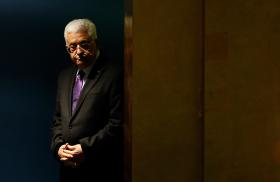During 1997 and 1998, the Washington Institute for Near East Policy organized a series of seminars in Washington, D.C., to examine changing dynamics and trends in Turkish foreign policy. The decision to organize the seminars was prompted by the realization that Turkish foreign policy in the post-Cold War era was passing through one of its most crucial and volatile periods since the founding of the Turkish Republic in 1923.
During the long Cold War era, Turkish foreign policy was restricted to just a few basic, if difficult and crucial, questions: how to ward off the Soviet threat, how to protect Turkish interests vis-à-vis Greece and Cyprus, and how to maintain and strengthen ties with the United States and NATO. Slightly less pressing but still important were questions of how to further Turkey’s integration with Western Europe and, during the latter part of the Cold War, how to defend against terrorism supported by neighbors like Syria, Iraq, and Iran. These issues were problematic, rendered more complicated in combination. As the U.S. arms embargo of Turkey in the mid-1970s bears witness, managing relations with Cyprus and Aegean rival Greece while building bilateral ties with Washington were goals not always easily reconciled.
Turkey’s foreign policy challenges during the Cold War were high-risk, posing existentially threatening dangers, even in addition to the threat of nuclear annihilation shared by all NATO allies. Thousands of Turks died in political violence and terrorism in the late 1970s, with Turkey apparently targeted for destabilization by the Soviets.
Today Turkey, like the United States, faces no existential threats but its neighborhood, even if no longer cowering under the threat of nuclear war, is more complicated than ever. Turkish officials who spent entire careers trying to steer their nation’s foreign policy through the challenges of the Cold War era are no doubt amazed at the mounting number of regional problems their heirs face today. Turkey plays a direct role in at least seven different, if overlapping, regions: Western Europe, the Balkans, the Aegean and the Eastern Mediterranean, the Middle East, the Caucasus-Caspian complex, Central Asia, and the Black Sea. This post-Soviet world is still rife with threats to Turkey but it presents opportunities as well–economic relations with Russia, a hub for energy distribution, new regional cooperation schemes, and perhaps even membership in the European Union. The removal of the Soviet Union’s influence from the Arab world has given more flexibility to Turkey’s Middle Eastern policies, enabling Ankara to pursue close relations with Israel, to deploy air and ground forces in northern Iraq against the ethnic Kurdish separatist organization, the Kurdistan Workers Party (PKK, by its Kurdish initials), and to issue an ultimatum forcing Syria to expel the PKK’s leader Abdullah Öcalan (as happened in 1998)–all without fearing that a tussle with a Soviet client might produce a conflagration with the patron.
The essays in this volume are intended to review and analyze the changing dynamics in Turkish foreign policy in the post-Cold War period. Andrew Mango sets the historical framework with his essay that examines the Atatürkist origins of foreign policy and the role of ethnicity since the founding of the Republic. William Hale’s chapter provides an evaluation of Turkey’s international economic relations in the 1990s. New trends in Turkey’s regional relations are analyzed by Duygu Bazoglu Sezer (Russia), Gareth Winrow (Central Asia),Sule Kut (Balkans), Tozun Bahcheli (Greece), Clement C. Dodd (Cyprus), Kemal Kirisci (Arab world and Iran), and Meliha Benli Altunisik (Israel). The last three chapters of the book focus on Turkish ties with the West, which remain Ankara’s top foreign policy priority: George Harris examines Turkey’s relations with the U.S., Ian Lesser reviews problems and prospects concerning Turkey’s role in Western security issues, and Atila Eralp discusses the evolution of Turkish-European Union relations. It should be noted that the authors extensively revised their papers to take into account the suggestions and exchanges of views at the seminars, as well as developments in Turkish foreign policy since the seminars were held in 1997-98.
Taken together, the essays in this volume illustrate a post-Cold War Turkish foreign policy that is increasingly bold, multi-directional, and–as Turkey becomes a more prosperous, militarily formidable power among neighbors mostly in decline–less predictable. The editors hope the insights offered in the following pages will contribute to understanding of those dynamics.
-
234 Pages


